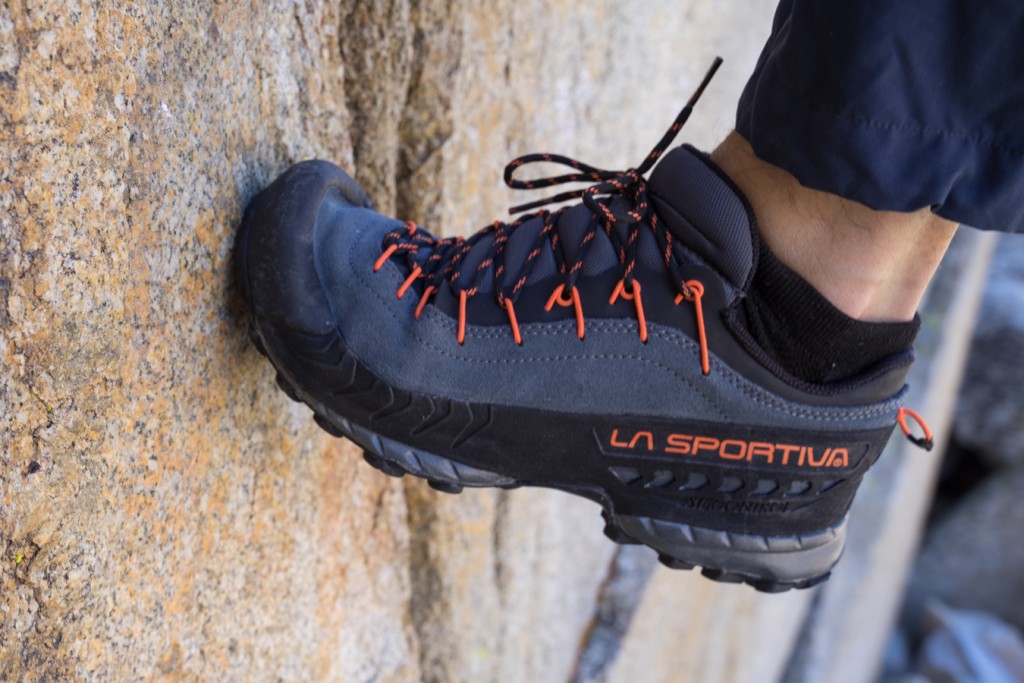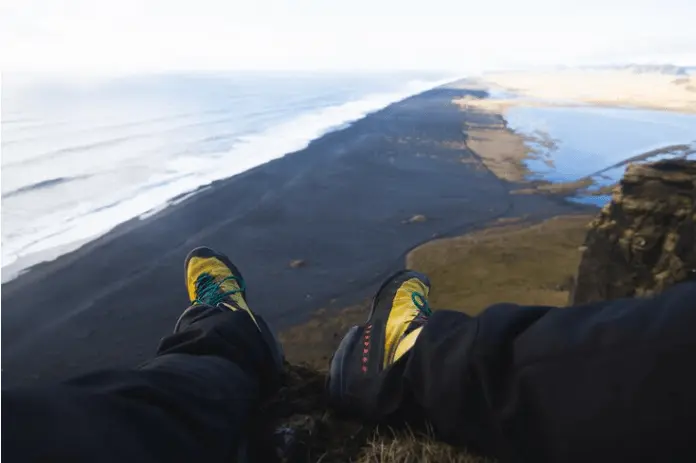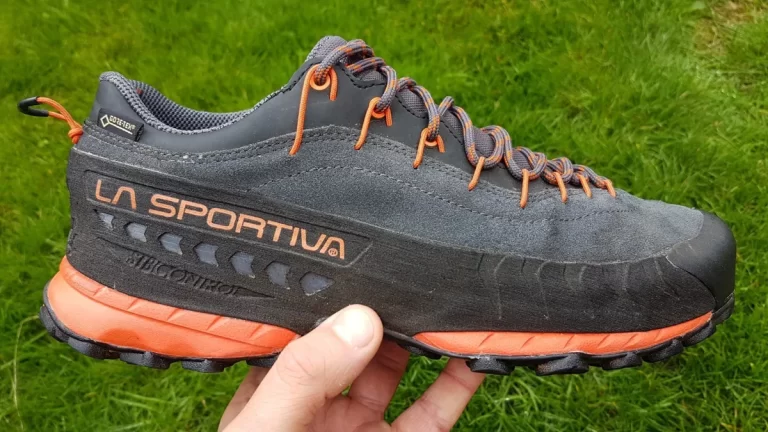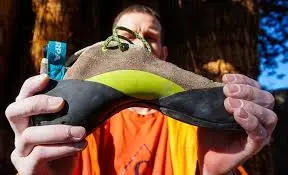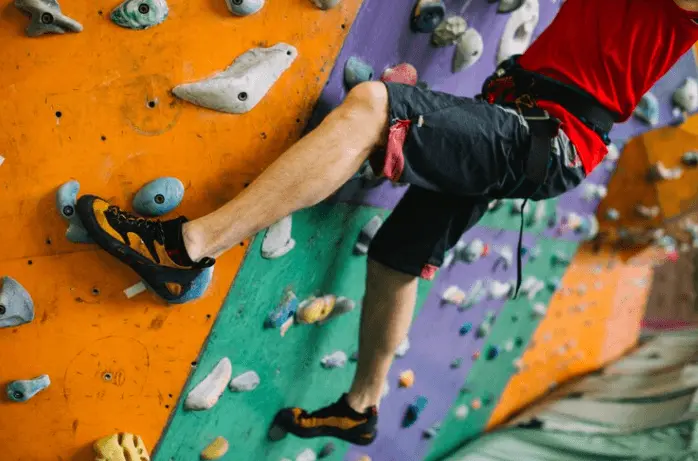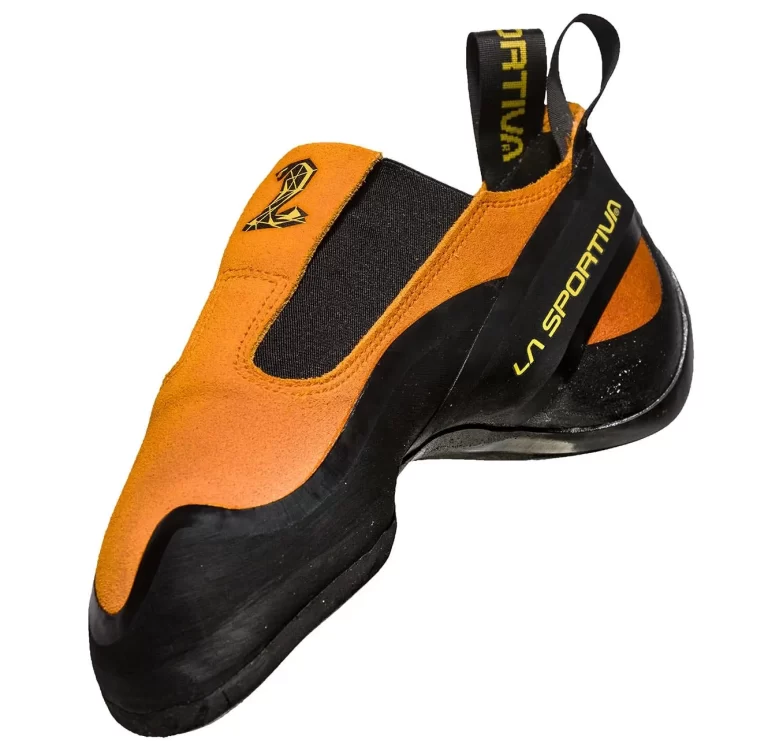Top 14 Best Approach Shoes of 2024
Approach boots combine the features of hiking shoes, climbing shoes and even mountaineering shoes in a class of their own. For climbers, this is an essential shoe that provides traction and traction on rocks, as well as comfort for miles on the trail. Because approaches can take many forms, from hiking to bouldering, from grade four or five climbs to multi-day endeavors, there is a wide variety of approach shoes. Below, we detail the best shoes for 2024, including comfortable shoes for rocks and trails, agile climbers, and waterproof mid-rise models. For more information, see the comparison table and buying tips under your selected options.
Best Overall Approach Shoe
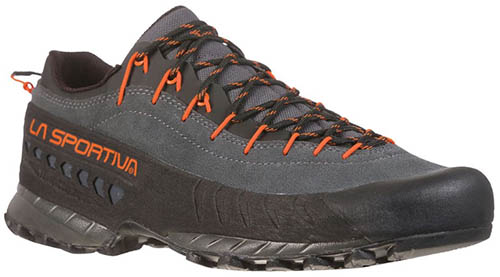
1. La Sportiva TX4
La Sportiva TX4 shoe category: Everywhere/Stampede
Weight: 1 pound 10 ounces.
Excellent leather
What we like: The leather upper fits well and is incredibly durable.
What we don’t like: Ventilation may be limited during hot summer conditions.
La Sportiva’s popular TX series combines the features of a climbing, mountaineering and running shoe, from the ultra-light TX2 to the powerful TX4 Mid GTX below. Of this esteemed group we prefer the balanced TX4. The Vibram rubber is of the highest quality and is one of the most durable tires we have tested for climbing and walking.
First we had the TX3, which has a breathable mesh upper instead of the TX4’s leather. However, these lightweight materials come at a price in terms of protection and durability. We love our TX3s, but we’ve drilled through three pairs of grills in two years and are reluctant to take them on very snowy roads. Sure, the TX4 leather is a little less breathable and can absorb water when exposed to the elements for long periods of time, but it’s also more durable and just adds weight. Both are high-end models and the TX3 is ideal for summer activities, but overall we slightly prefer the more versatile TX4. Also new this year, Sportiva introduces the TX4 R, which features fun retro styling and a new platform with an adjustable sole.
Best Lightweight Approach Shoe
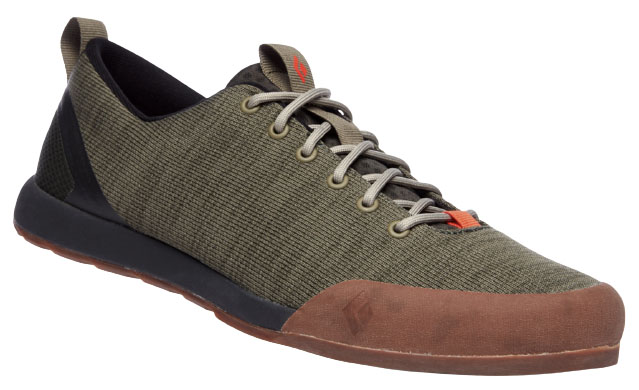
2. Black Diamond Circuit
Shoe Category: Black Diamond Ring: Cracked/Everywhere
Weight: 1 pound 2 ounces.
Upper: fabric
What we like: The aerodynamic weight and size are perfect for carrying and climbing.
What we don’t like: Lacks enough protection or cushioning for long approaches or landings.
If you do a lot of downhill riding, do yourself a favor and invest in very lightweight approach shoes. Whether you carry a shoe that fits on your belt or in your bag, a few ounces of difference (and a little bulk) can make a big difference on long climbs. In this category, the Black Diamond ring is an easy choice: it’s very light, weighing just over a pound a pair, has a ring on the back to attach a carabiner, and pairs well with BD’s BlackLabel-Street rubber tights. And a rubber band that goes around the end. And when you stand on a rock, the heel drops for easier entry.
Of course, there’s a twist to these shoes: While they work in areas with relatively short access (like Joshua Tree or Squamish), you’ll likely need more protection, cushioning, and traction in mountainous areas or for hiking. Like in Roccia Rossa. The Arc’teryx Norvan SL 3 ($160) is an interesting alternative used by many climbers (especially in Squamish): it’s part of the brand’s trail line, but it’s a secret weapon for getting up close and down at a ridiculously low weight . 12.5 lb 0.5 oz (per pair), Vibram Megagrip outsole and integrated carabiners on each heel. But the Black Diamond Circuit is priced at just $110 and, like the Session model below, looks great around town.
Best Approach Shoe for Technical Scrambling
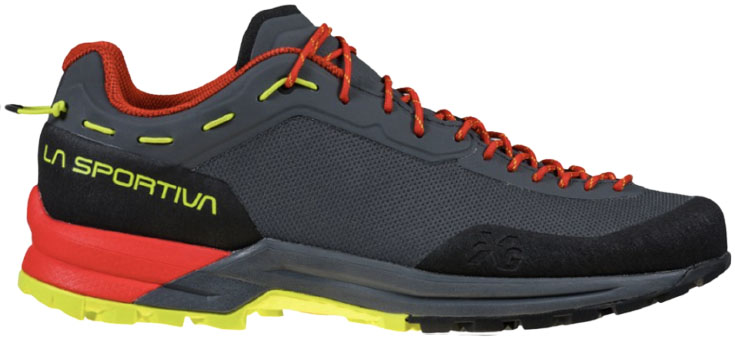
3. La Sportiva TX Guide
The La Sportiva TX manual is closer to the shoe category: climbing/everywhere.
Weight: 1 pound 8.6 ounces.
Upper: mesh
What we like: High-quality shoes for technical climbing and mountaineering.
What we don’t like: Expensive and less durable than the TX4.
If you have been mountaineering for a long time, you will probably remember La Sportiva Ganda. The low-profile Ganda boots have been a favorite among experienced climbers and guides and can be worn during level 5 rock climbing. Now, after a few years of absence, TX Guide is bringing the high-tech boot back to the Sport line and we love it. Surprisingly, they’re also soft and flexible (touted as shock-absorbing for runners), which is great for comfort and speed on the trail.
It is important to note that the TX rail is designed for a different late model than the other models in the TX line, which are much narrower at the end. Additionally, you lose some durability due to the mesh upper (Sportiva also offers a slightly heavier leather version), and the sticky Guide outsole doesn’t hold up as well as harder rubber compounds. But these compromises make it even more impressive on technical rock: We forgot to bring climbing shoes for a six-pitch 5.10+ trek in the Washington State Alps, and a guide was a surprisingly effective alternative. Not everyone needs (or wants to pay for) such a high-performance shoe, but if you like long days of climbing with technical climbs and fast walking, the Guide TX is our number one pick. Year.
Best Approach Shoe/Trail Runner Hybrid

4. La Sportiva Ultra Raptor II
La Sportiva Ultra Raptor II Shoes – Category: All-Terrain Shoes
Weight: 1 pound 9 ounces.
Upper: mesh
What we like: Great protection and grip with excellent comfort over long distances.
What we don’t like: Mesh uppers have a much shorter lifespan than leather uppers.
More and more climbers are turning to running shoes, and the trend makes sense: they’re fairly light, comfortable for hiking, and offer good traction on rocks. Compared to sturdy, durable shoes, they are softer on your feet, especially on long hikes. And while you can use any old pair for short, easy trails, for mountainous terrain you’ll need a more powerful runner. The Ultra Raptor, one of the oldest shoes in the road racing category, comes close to this definition and is a good solution for those who travel fast and light.
One of our favorite features of the Ultra Raptor II is Vibram FriXion. In addition to superior toe and heel protection, you also get a level of cushioning and flexibility from the shoe that’s perfect for long days on the trails. We’ve used the Sportiva for activities like trail running, off-road travel, glacier crossings (it pairs well with the popular Petzl Leopard), and low-altitude Class V climbs, and found it to be an incredibly powerful tool. For work. . Keep in mind that you’ll lose a lot of durability (we don’t like cracked rock shoes), and a breathable mesh upper won’t protect your feet from cold and wind like leather. But on summer days in the mountains, the Ultra Raptor is hard to beat.
Best Approach Shoe for Mountain Terrain
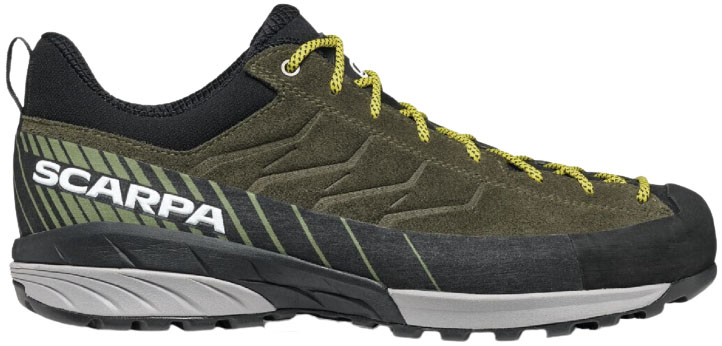
5. Scarpa Mescalito
Approach shoes Scarpa Mescalito_0Category: Mountain/All Terrain
Weight: 1 pound 12.2 ounces.
Upper: suede.
What we like: Very resistant and protective shoes for demanding mountain excursions.
What we don’t like: Round crampons, expensive and heavy, not very aggressive on soft terrain.
We’ve included plenty of La Sportiva shoes in our list of top picks, but we’d be remiss if we left out another Italian shoe giant: Scarpa. The popular Mescalto running shoes are specially designed to tackle tough goals in the mountains. They buck the lightweight trend with a durable suede upper, a wide wrap-around strap and supportive TPU cuffs. The Vibram Megagrip outsole features versatile rounded rectangular lugs for rocky and loose terrain, as well as a forefoot climbing zone for precision on rocky ledges and terrain. It all adds up to a truly durable shoe that provides exceptional support and protection for your feet, whether you’re walking on a sloping field or climbing steps in steep snow.
Mescalito is a favorite choice of mountain guides and serious climbers who often venture outdoors, but we don’t recommend it for most climbers. First, at $229, this is one of the more expensive shoes here, and you won’t get a waterproof Gore-Tex model like the Salewa MTN Trainer or the TX4 Mid below (though you can get by with waterproof suede). Additionally, the Mescalito can feel heavy and brick-like when driving on normal roads, and the full tread isn’t particularly aggressive on loose terrain like mud, snow, and gravel. But for serious mountain travel, you won’t find a stronger or more suitable design.
Best Approach Shoe with Everyday Appeal
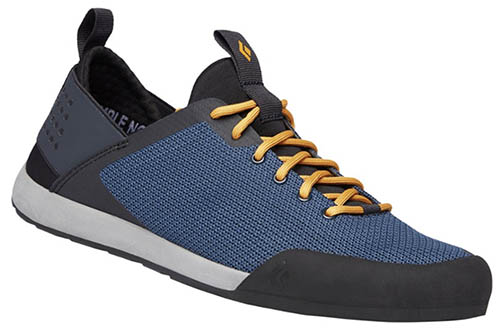
6. Black Diamond Session
Black Diamond Session shoe category: Cragging/All Round
Weight: 1 pound 4 ounces.
Upper: fabric
What we like: Casual, comfortable shoes with a unique fit.
What we don’t: The rubber of the sole is not very sticky.
Approach shoes are currently worn almost exclusively by climbers—not just at the crag, but also at the brewery, the gym, and other locations. But models like the TX4 above and the Mtn Trainer below may be too bulky (read: uncomfortable) for everyday use. The Black Diamond Session, on the other hand, is designed with a more casual style, combining street style and a soft boot-like upper with all the features we look for in a sneaker. The result is an extremely comfortable shoe, easy to put on, beautiful and fun to wear. In addition to the original version presented here, Black Diamond also offers the shoe in a more resistant suede model.
One of our favorite features of the Session is the elastic heel strap, which makes it easy to get the shoe on and off without fumbling with the laces. The heel also folds up and allows for slip-on use, ideal for gym climbing, rock climbing and various uses around the house. The Session also stands out among approach shoes with a durable rubber outsole, protective toe cap and heel loops to support the instep. Note that Black Diamond’s BlackLabel-Street coating is designed for asphalt use, so the Session is designed to last, but provides less traction on rocks than a performance-oriented shoe.
Best of the Rest
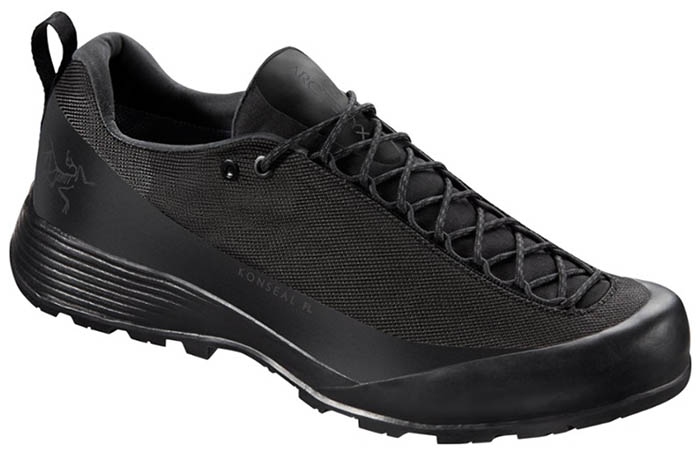
7. Arc’teryx Konseal FL 2
Arc’teryx Konseal FL 2 walking shoes (black)Category: All-around/Scramble
Weight: 1 pound 5.8 ounces.
Upper: Ripstop mesh.
What we like: Great and light weight.
What we don’t like: Lacks the precision fit and durability of leather shoes.
British Columbia-based Arc’teryx is one of the best companies when it comes to technical mountain gear and clothing, and its Konseal FL boots are a good example of this. Similar to the previously mentioned Guida La Sportiva TX, the Konseal FL 2 features a hybrid design that combines the fit, agility, and comfort of a trail runner with the support, comfort, and grip of an approach shoe. The end result is a great all-round vehicle for alpine missions that involve logging miles, traversing rough terrain and climbing. You get a Vibram Megagrip outsole similar to La Sportiva’s TX4, plus an updated lug pattern that offers better performance on a variety of surfaces. Add a springy foam heel, a mesh upper (more breathable and flexible on the 2), and a light weight of 1 pound, 5.8 ounces, and the Konseal is more flexible and lightweight than most other sneakers.
Despite the careful engineering of the Konseal FL, choosing such a lightweight design still has its drawbacks. During testing, we were very impressed with the mesh upper (especially compared to the Sportiva TX3), but it doesn’t offer the same durability, waterproofing, or grip as a leather shoe. Additionally, some may find the contoured toe box too narrow (especially after walking for miles). But for climbing and rock climbing, the combination of weight and performance is hard to beat. Finally, it’s worth noting that the Konseal also comes in a leather GTX model ($220), which is much heavier (1 pound, 12 ounces) but very durable and protective.
8. Scarpa Crux II

Scarpa Crocs (Shark Activator) Category: Off-road vehicle
Weight: 1 pound 10.8 ounces.
Upper: suede.
What we like: Comfortable, economical and lightweight off-road vehicle.
What we don’t like: This isn’t our only favorite design.
The Crux is Scarpa’s famous multipurpose boot, designed to tackle both off-road challenges and long stretches of hiking. You get the snug, comfortable feel of a leather boot without much give thanks to the suede upper and the Kevlar strip that connects the laces in the midfoot. We believe that the Crux’s frame is substantially wider than the La Sportiva Boulder’s. And while a generous amount of underfoot cushioning means the Crux isn’t the most supportive platform, it’s a very comfortable hiking shoe that served us well on everything from painful side slopes to moderate climbs like the classic Wolf’s Head of Wind River. intervals.
As for the outsole, we prefer the speckled design of the La Sportiva TX4 shown above, which grips rocks better and is durable enough to provide a stable platform on small ledges. But the Crux’s sharp tread cuts through wet leaves and snow, and as mentioned above, the relatively flexible, shock-absorbing outsole is the more comfortable option for easily walking for miles. However, at 13.4 ounces per boot, the Scarpa can’t match the more flexible models of today’s competitors. But for casual styles, where there is no need to wear belted shoes, this is a comfortable and durable option.
9. Black Diamond Mission LT

Black Diamond Mission LTC boot category: All Terrain
Weight: 1 pound 6 ounces.
Upper: fabric
What we like: Breathable and lightweight without sacrificing road protection.
What we don’t like: The sock-like lining makes it difficult to put on.
The Black Diamond footwear range competes with La Sportiva and Scarpa, offering an ever-expanding range of footwear to meet the diverse needs of mountain climbers. The versatile Mission LT is a comfortable, ventilated workhorse designed for long hikes and rock climbing. The bottom of the shoe features a rocker outsole (ideal for light walking) and a tread that balances traction on rocks in the forefoot and more pronounced lugs in the rear for loose and wet terrain. We also liked the one-piece EnduroKnit Mission LT upper and were surprised by its durability (especially compared to the TX3 mesh), though you’ll get more abrasion and water resistance with the Konseal FL ripstop mesh (one of our favorite synthetic uppers ). . .
One of the unique design features of the Mission LT is the sock-like cushioning, which we love and hate. On the one hand, you get a great fit and excellent overall protection from sand and debris. But the downside is that the shoes are difficult to put on, which makes us reluctant to use them on shorter missions on cliffs or reefs. But for full days of hiking when you keep your shoes on between steps, the Mission LT shines and is more road-ready than most. Plus, with a competitive weight of 1 pound, 6 ounces, these shoes can be thrown into a backpack or attached to a harness for long hikes. Finally, Black Diamond also makes the Mission in a leather version (Mission XP Leather) for those who want greater durability and protection.
10. La Sportiva TX2 Evo
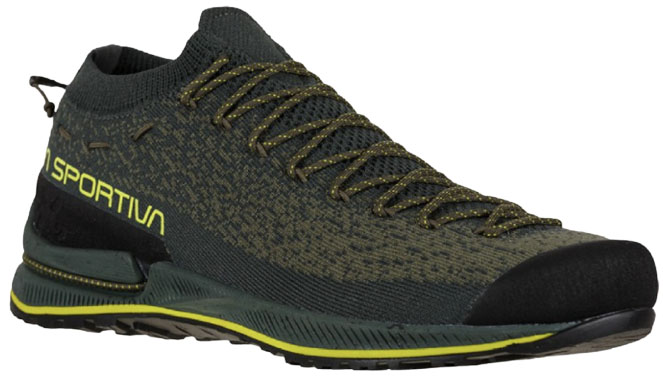
La Sportiva TX2 Evo – Category: Cracked/Everywhere
Weight: 1 pound 4.4 ounces.
Upper: fabric
What we like: Great shoes for hiking.
What we don’t like: Minimal support, poor durability.
The TX2 Evo is not only the lightest member of the La Sportiva TX family, but also one of the lightest models on our list. The minimalist design weighs just 10.2 ounces per boot and includes a surprising number of thoughtful features. The flat sole, durable toe and grippy Vibram Idrogrip rubber offer superior performance on technical rocks, while a comfortable fit is ensured by the flexible upper and customizable lacing system. Breathability is ideal for hot summer days and the TX2 dries quickly and dries after crossing a river. And with an elastic loop holding the shoe together to make it easier to secure in the saddle, we love it when we take it on and off.
The downside of the TX2 Evo is that it is not particularly durable, especially under extreme use. It’s true that Sportiva designed the latest Evo as a simple fix, but in our experience with the first-generation TX2, the stem was the first component to fail. Plus, with a flat sole and minimal support and cushioning, the shoe stays short during long days on the trails. But for short approaches, easy climbs and rock climbing, there’s nothing better. For a more durable option, Sportiva also makes the TX2 Evo Leather, which is cheaper ($149) and slightly heavier at 1 pound, 4.8 ounces.
11. La Sportiva Boulder X
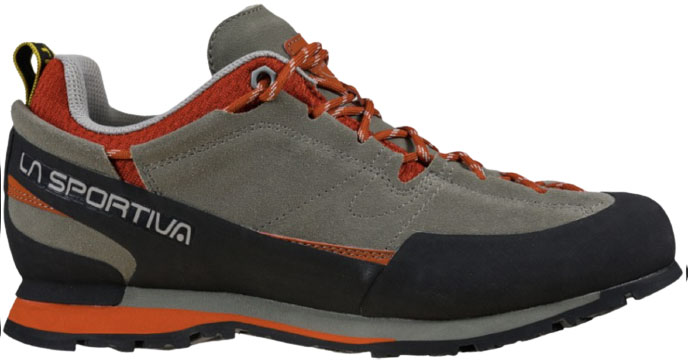
La Sportiva Boulder shoes are close to the X category: suitable for any terrain.
Weight: 2 lbs. 2 oz
Excellent leather
What we like: Sticky rubber and good price.
What we don’t do: Heavy and bulky.
For beginner or veteran climbers looking for an affordable option, look no further than La Sportiva Boulder. . And don’t let the price fool you: These shoes can often be found online for $120.
What are the disadvantages of Boulder X? The boots are too heavy to wear with a belt, they don’t handle class 5 terrain well, and the bulky soles don’t hold up well to aluminum crampons. Additionally, the leather upper stretches so much when wet that we have trouble curling our toes, causing tears where the elastic meets the leather.
12. Salewa Mtn Trainer 2 GTX
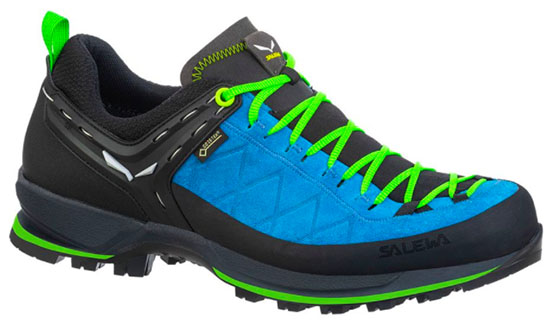
Salewa Mountain Trainer 2 GTX sneakers Category: Mountain
Weight: 2 lbs. 2.8 oz
Upper: suede.
What we like: Sturdy, durable mountain shoes.
What we don’t like: Slim Fit isn’t for everyone; Too heavy and awkward to lift.
Coming from Montebelluna, Italy, also known as the shoe capital of the world, the Salewa Mtn Trainer 2 GTX is a shoe for the mountains. With full rubber strap protection, a waterproof Gore-Tex membrane and a durable Vibram outsole, the Mtn Trainer feels more like a tank than a race car and is a great shoe for keeping your feet on the ground. trace. Voyage. Including ankle-deep crawling, snow kicking, cliff jumping and more. The Salewa Mtn Trainer 2 is also a great option for non-climbers who want to explore the mountains in a lighter, more compact shoe.
How does Mtn Trainer differ from the previous Scarpa Mescalito? At 2 pounds 2.8 ounces, it’s much heavier, but the extra weight provides a waterproof membrane (Mtn Trainer 2 is also available in a non-GTX version for $200). Overall, the Scarpa is a much better shoe for climbing, with a rounded tread and sharp-edged platform, while the Salewa has more pronounced lugs, making it a better choice for wet, shifting terrain like mud and snow. Note: The latest version of the Mtn Trainer (“2”) is very narrow and the elastic cuff built into the tongue makes it difficult to put on. But for the right conditions or as a lightweight alternative to climbing shoes, it’s hard to beat the durability and protection offered by Salewa.
13. La Sportiva TX4 Mid GTX
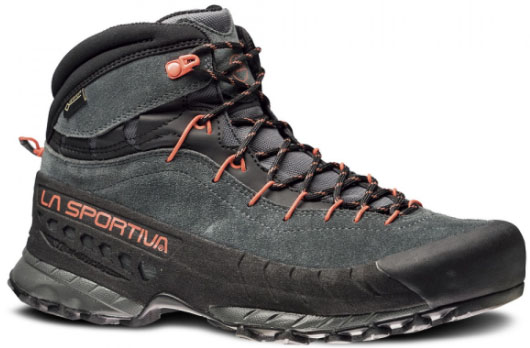
La Sportiva TX4 Mid GTX Category: Mountain
Weight: 2 lbs. 0.4 oz
Excellent leather
What we like: Great support and protection at a reasonable weight.
What we don’t like: Lack of heel edges and less versatility than flat boots.
Like the previous Salewa Mtn Trainer 2 GTX, the La Sportiva TX4 Mid is a great choice if you want the support and protection of a climbing shoe, but don’t want to carry the weight of one. Maybe you’re climbing a route like Becky Chouinard at Bugaboos, which requires carrying a heavy load for miles to base camp, hiking through steep snow on the approach, and carrying boots as you climb up and down the snow. Backwards. Field. Climbing shoes are ideal for this task, but with a shoe like the TX4 Mid GTX you can get similar performance in a lighter package.
The TX4 Mid is the same weight as the Mtn Trainer 2 above, but features a medium cut for added support on rough terrain. Ultimately, these shoes are best suited for rock riding, but the Salewa gives us an advantage on wet terrain like mud and snow. Compared to the low-profile TX4, the Gore-Tex Mid midsole offers significant protection, although the non-waterproof boot breathes a little better and dries faster. Additionally, the stand weighs 6.4 ounces more per pair. Both TX4 models are durable enough for most off-trail use, but if you prefer a more comfortable shoe that includes a semi-automatic dog-carrying heel counter, check out the La Sportiva Aequilibrium Speed below. And while we haven’t had a chance to try it yet, we’ve heard good things about Black Diamond’s relatively new Mission Leather Mid WP ($190), which offers a $19 savings over the Sportiva.
14. La Sportiva Aequilibrium Speed GTX
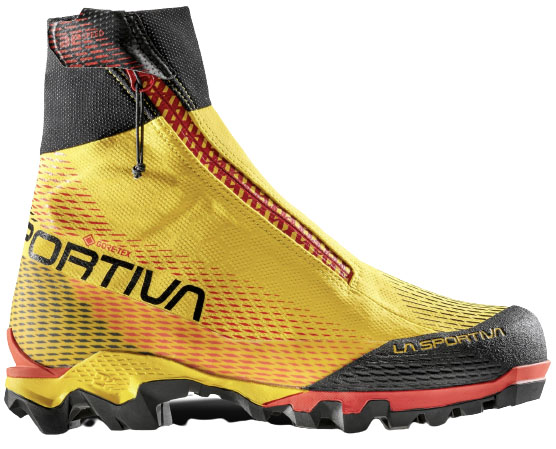
La Sportiva Aequilibrium speed climbing shoes Category: Mountain
Weight: 2lbs 5.4oz.
Upper: synthetic
What we like: Ideal for snowy approaches. The heel bracket is equipped with semi-automatic straps.
What we don’t like: The heaviness and imprecision of traditional shoes.
Climbers love to push the limits of their approach shoes, but some terrain (like the North Cascades, early-season Tetons, or Patagonia) simply demands more from your shoes. It’s not easy to find a shoe that works (and comfortably) on easy trails, glaciers, and rocks, but La Sportiva’s Aequilibrium Speed GTX fits better than most. As an approach shoe, it’s flexible and cushioned enough to keep you comfortable mile after mile, and its lightweight design won’t weigh down your pack too much on the climb. On the other hand, thanks to the central cut and heel reinforcement, the Aequilibrium Speed offers better stability and compatibility with any nearby shoe.
The Aequilibrium Speed’s large girth and significant weight savings make it too heavy and bulky for most summer purposes, especially when carrying gear up and down hills. Additionally, with a Gore-Tex liner you will lose breathability compared to non-waterproof boots like the TX4 above. Finally, due to such a lightweight design, the Speed suffers in terms of durability compared to similar climbing shoes. But in mixed conditions or on long snowy approaches to Alpine rock, the Balance Speed may be the Sportiva’s best bet.
Tips for Buying Approach Shoes
What is your approach to shoes?
Shoe category approach
Soles and grip
confine
Water leak
Ventilation
Weight
Fit and size
Rigidity and stability
Finger protection
Superior materials
Medium height approach shoes
What is an Approach Shoe?
Approach shoes are a type of specialized footwear designed for climbers, climbers and hikers who frequently encounter rocky terrain. They’re more durable than walking or running shoes, have a tighter fit for precision, and come with large elastic straps for protection. But best of all, they have a very sticky rubber outsole (similar to rock shoes) for excellent traction on rocks. In short, no other shoe model offers the level of protection, grip and stability offered by a shoe to tackle more challenging terrain.

However, just because you’re a climber doesn’t necessarily mean you need the right shoes. For a short and easy hike to the rock, you can wear sneakers or sandals. Hell, you could practically drive a car over a rock like Rifle. But for long rocky approaches, adventurous multi-pitch missions or big mountaineering trips, approach boots are an essential addition to your climbing gear.
Approach Shoe Categories
As climbing has become an increasingly diverse field (from alpine climbing, to bouldering, to indoor climbing), approach shoes have followed suit. Some models are stiffer, more aerodynamic and more protective of technical performance on rocks, while others favor breathability and flexibility for trail running. Still others are designed specifically for slopes, gentle slopes, or everyday use. We have divided the market into four main categories: off-road, rock climbing, climbing and mountain.

Everywhere
All-around approach shoes are standard models designed to tackle the various trails and rocks that stand between you and your climbing goal. These models are comfortable and suitable for long hikes, provide traction on rocky and wet terrain and are wide enough to handle leg swelling. While many shoes in this category can withstand the challenge of technical rocks (see the Scrambling category below for these features), their design prioritizes approach features; This is best reflected in the outsole, which is often a versatile combination of climbing zone, soft lugs and aggressive heel. The versatile shoes have leather and synthetic uppers (often knit or mesh), so you can decide whether you want to prioritize durability or breathability. Finally, if you’re wearing shoes to climb a few steps before landing, it’s worth considering the lighter options in this category.

Scrambling
Some climbers prefer appropriate footwear over climbing shoes for easy to moderate climbs such as climbing the Flatiron, guiding clients on semi-class 5 routes, or moderate hills in the Alps. More comfortable than climbing shoes but more precise than standard approach shoes , our climbing models prioritize rock performance with a low-profile design, flat, stiff outsoles with grooved rubber (often without heel brake), and a precise toe box. which guarantees precise contact with the rock. Because they share many of the features of a climbing shoe, they lack support, comfort, and long-distance traction and aren’t our first choice for those looking for them. The most popular approach shoes in this category include La Sportiva TX Guide and Scarpa Gecko.
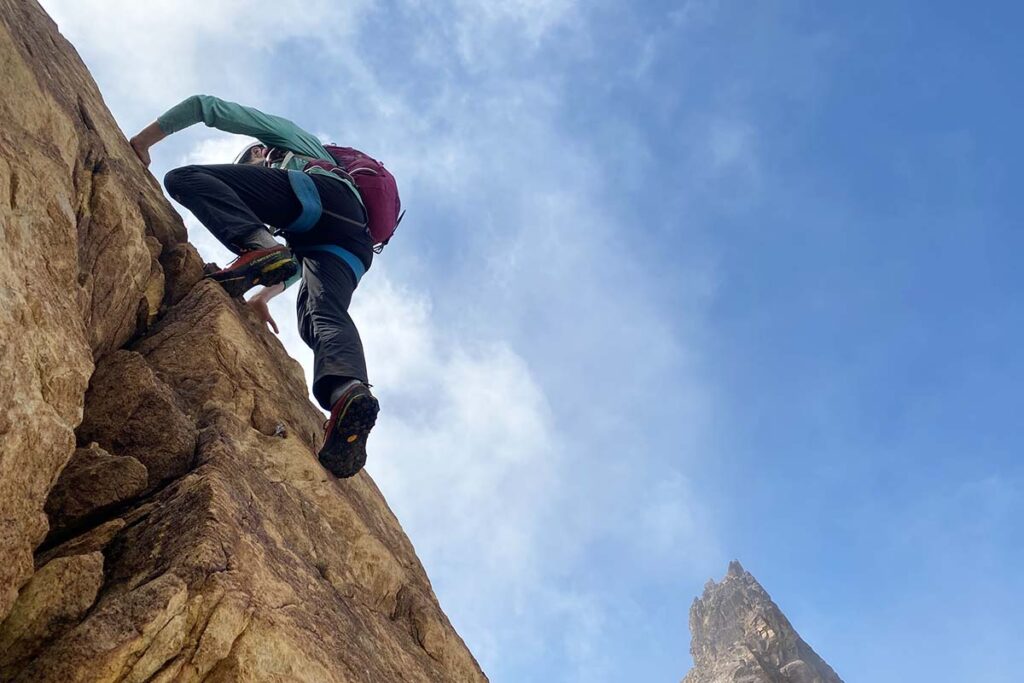
Cragging
For most climbers, reaching a crag or crag means a short hike along a trail followed by a day of climbing in the same place. The grippy rubber outsole and sturdy design of an approach shoe can be helpful when rock hopping, but once you arrive at your destination, you’ll need comfortable shoes that are easy to put on and take off (we often bring a pair with we ). flip flops). is dropped on the stumps for the same reason). So the approach shoes in our climbing category (they’re also great for rock climbing) are more casual, with features like knit uppers, microfiber lining for barefoot comfort, and a folding heel for quick launches. . Climbing shoes can also be a good option for multi-level climbing if you need lightweight shoes for later climbing and to use on the way down. The Black Diamond Session and Circuit are some of our favorite sneakers for rocking.
Mountain
If you’re heading to a climbing area like Bugaboos or the North Cascades, you’ll need the right boots that can handle snow and challenging off-road terrain. Many shoes in our multipurpose category can do the same job, but some designs will provide better traction and protection thanks to stronger leather uppers, sharper tread and deeper lugs, mid-sized construction, and built-in waterproofing. Additionally, those using strappy boots will need a relatively stiff sole and upper (leather is better than mesh), and a high collar will provide added comfort and security. Approach shoes in our mountain category include the Salewa Mtn Trainer, La Sportiva TX4 Mid and La Sportiva Aequilibrium Speed GTX.

Soles and grip
The sole of an approach shoe can say a lot about what it was designed for. There are three main areas in the sole of an approach shoe: the toe box, the midfoot area, and the heel braking area. Most approach shoes, starting at the toe, have a large elastic band that surrounds the front, sides and top of the toes, mimicking a climbing shoe. An approach shoe, made with edges and very flat, will have a flexible sole under the toe, allowing for close and quick contact with the stone.
Moving on to the midfoot and heel brake, the outsole design may vary slightly from model to model. Overall, the serrated design of a shoe like the La Sportiva TX4 offers more surface area on rocks, but struggles on wet or snowy terrain. In contrast, models with tapered treads, like the Salewa Mtn Trainer 2, are designed to provide good traction on wet and snowy terrain, but tend to be clunkier on technical rocks. Finally, most approach boots feature heel brakes made of thin strips of sticky rubber for traction and braking on slopes. Some shoes do not have a heel lock, others do not have a technical toe box, and all will have slight differences in the midfoot rubber. Pay attention to each of these features to ensure you buy the right shoes to meet your specific needs.
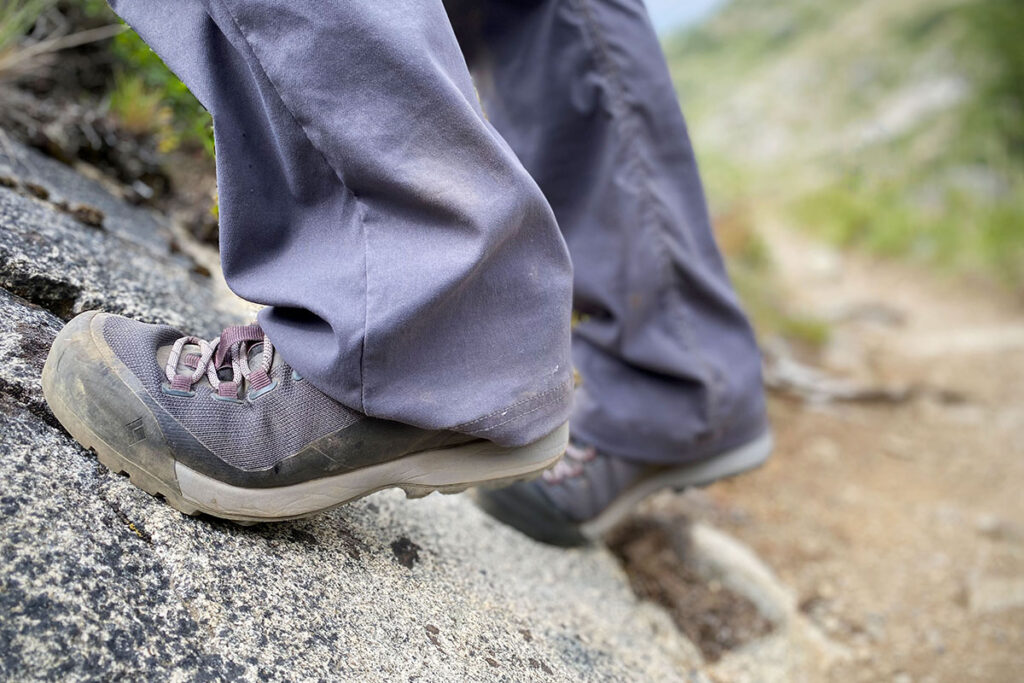
Edging
For most users who use the shoe exclusively for hiking and moderate climbing, edges are not an issue. But for those competent enough to climb challenging terrain in the same shoes they wear, a platform with a stable edge is essential. Additionally, climbers should look for models where the rubber sits flush with the outsole (as seen on the Arc’teryx Konseal FL and Scarpa Gecko). The result is a durable, seamless edge, similar to the edge of a rock shoe. Even to the untrained eye, this edge will look different than a multi-layer padded edge like the La Sportiva Boulder X or Scarpa Crux II.
Waterproofing
With a few exceptions, climbers usually limit their efforts to days when the weather is dry and hot. In the world of closed boots, breathability is a more important factor than waterproofness. However, waterproofing provides good protection if your climbing takes you to the mountains. The additional protection provided by the waterproof and breathable membrane integrated into the shoe is ideal for crossing streams, sudden downpours or tackling snow. However, the extra layer adds weight and greatly affects breathability, which is why there are so few Gore-Tex models on our list. However, if you know you’re looking for a waterproof shoe, we’ve found that GTX models still work well, including the La Sportiva TX4 Mid GTX and Salewa Mtn Trainer 2 GTX.

Recently we have seen an increase in the use of synthetic materials in the uppers of high-end shoes, such as the La Sportiva TX2 and TX3, Arc’teryx Konseal FL and Black Diamond Mission LT. While these shoes have very little water resistance, it’s important to remember that the canvas and mesh upper absorbs water much better than leather and doesn’t weigh down the shoe when wet. As a result, they dry faster after being sprayed thoroughly. That’s why we think synthetic materials are a great choice for summer travel when wet feet don’t pose a safety risk. However, for most mountain routes we still choose leather shoes (like the TX4).
Breathability
In terms of ventilation, closed boots with mesh or mesh uppers breathe better than suede or leather options, and much better than GTX models. However, there is definitely a downside: highly breathable shoes (like the La Sportiva TX2 Evo) are not as durable or protective as their leather counterparts (La Sportiva Boulder). For example, Black Diamond’s EnduroKnit mesh and Arc’teryx ripstop mesh (seen in Konseal FL). We were particularly impressed with these two materials for their combination of breathability and abrasion resistance.
Additionally, shoes with mesh uppers are more permeable to small particles such as sand, dirt and snow. Plus, extra features like a sock-like liner (like Black Diamond’s Mission LT) or even a short waistband can help keep road debris out. Bottom line: Mesh boots are the best choice for warm climates, but some styles will be more vulnerable than others. And if you’re really looking for the ultimate in protection and durability, we recommend choosing a shoe with a leather or suede upper.
Weight
The weight of your approach shoe matters whether it’s on your foot, in your climbing bag, or hanging from your harness. Walking mile after mile with less than a pound per foot will be less tiring than if you had shoes that weigh a pound per foot, and the same goes for wearing shoes.
Consider the weight of your approach shoes, especially if you spend as much time in them as you do on your feet. Chances are, the more this connection extends to hiking, the more lightweight shoes you should consider (like the La Sportiva TX2 Evo or Black Diamond Circuit). However, there are always pros and cons to losing weight. The lighter the shoes you choose, the less likely they are to provide protection, stability and durability. If your techniques require high performance from your shoes, don’t over-optimize them.
Fit and size
There are always compromises when choosing the right shoe size. Most models in our Scrumbling category are designed to fit perfectly, provide responsiveness and stability on technical rocks. Shoes in our off-road and mountain categories should fit like hiking shoes, leaving little room for your toes to move up slopes and over long distances with swollen feet.
Most approach shoes have a lacing system at the toe, which leaves more or less room for the toes depending on the activity. For this reason we recommend that you wear comfortable shoes and tighten the laces well. Also make sure you buy a model that fits the width of your feet well. Different brands or models fit differently. For example, the La Sportiva TX3 and TX4 are known for their spaciousness, while the Scarpa Gecko has a narrow structure.

Stiffness and Stability
Most approach boots have built-in internal shanks or supports to provide some degree of rigidity. This design differentiates these shoes from lightweight running shoes, although they are far from a full-fledged mountaineering upper. In general, the more challenging the terrain, such as snow, rocks or steep trails, the more benefits you will get from a stiffer approach shoe (examples: shoes in our mountain category such as the Salewa Mtn Trainer 2 GTX). Stiff shoes will be less comfortable on easy trails and on long-distance hikes (which is why we don’t recommend hiking-friendly shoes), but on uneven terrain they will prevent the foot from flexing and force it to hold.
Additionally, the stiffer the approach shoe, the better it will perform on technical rocks (within reason, of course). To illustrate this point, let’s imagine you’re throwing a small kick while wearing sneakers. In our imagination the soft cushion shrinks, the shoe does not maintain its shape and the foot separates from the handle. Now sit on the same edge with a stiffer, more precise approach shoe. The rubber doesn’t compress too much and the outsole maintains a durable platform. For this reason, many climbing shoes in our category (such as La Sportiva TX4 and Scarpa Gecko) have a rigid midsole and outsole. Again, you’ll need to find the right balance for your needs, as for many, stiff shoes can be uncomfortable and cumbersome on the trail.
Finger protection
Most of the shoes on our list, including the lightweight Black Diamond Circuit, have a tread that extends over the toe box, providing toe impact protection and added traction on rocks. Many of these shoes feature fully rolled edges, which add a layer of protection and traction to the entire foot. The higher the edge (both in height and in surface area around the foot), the more durable the shoe is and the better it will perform on cracks and rocky trails.
Superior materials
The type of material used in a shoe’s upper (the fabric that attaches to the rubber outsole) is directly related to its durability, water resistance, and breathability. Most often, shoes are made of synthetic mesh, jersey, leather, or a combination of these. Below we take a closer look at the advantages and disadvantages of the most commonly used materials in approach shoes.
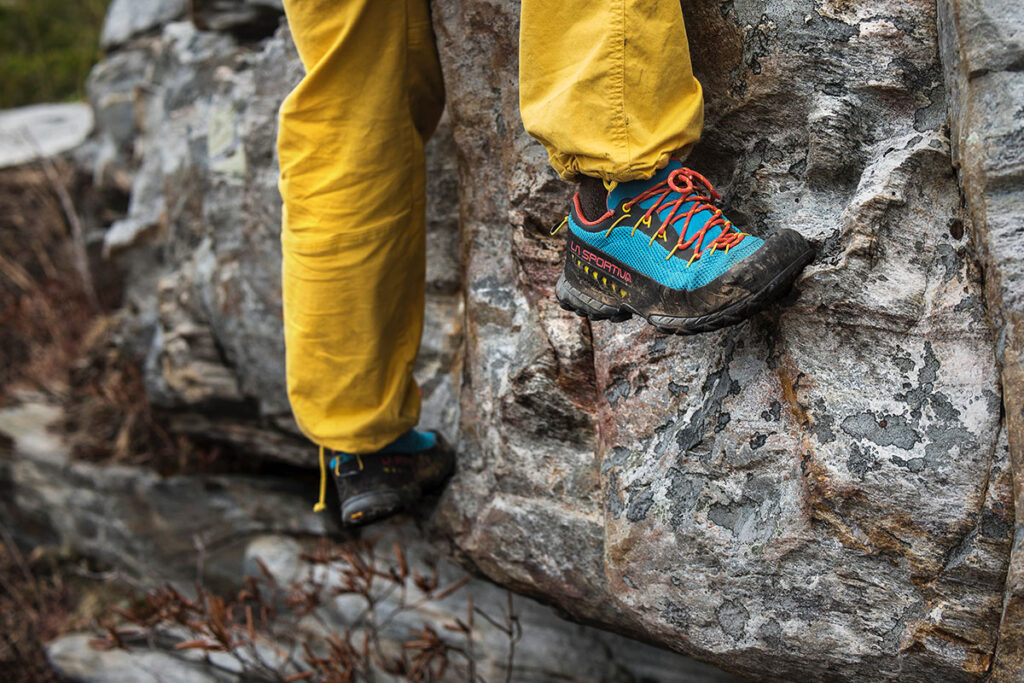
Synthetic
Mesh nylon, open mesh panels and textile uppers are becoming increasingly popular in the footwear industry as manufacturers look to reduce the weight of their designs. This breathable synthetic upper definitely helps improve breathability and reduce weight, but it takes away from the shoe’s water resistance, durability, protection, and climbing ability. Ultimately, we like mesh or mesh shoes during the summer months, but they’re not ideal for wet or snowy terrain or particularly technical climbs.
However, as we have said many times already, some synthetic uppers manage to combine many of the advantages of leather while maintaining a high degree of breathability. In particular, Black Diamond’s EnduroKnit (as seen in the Circuit, Session and Mission LT) and Arc’teryx Ripstop mesh (in the Konseal FL) are incredibly durable and protective, so much so that we thought about these shoes. falls into the same category as leather shoes like the La Sportiva TX4 and Scarpa Crux II. It also has the added benefit of being able to absorb water and dry quickly, while leather can become heavy when wet.
Leather
Most approach shoes, such as those for rock climbing, have leather uppers. Without getting too technical, suede, leather, and nubuck are all made from the same material and generally perform the same. In hiking boots, this leather will be lighter and softer than the typical patent leather you see in older hiking boots. Of all the premium materials, leather offers the most protection, durability and water resistance. However, it is the least breathable. Sometimes, as in the Scarpa Gecko, leather and mesh go hand in hand to ensure breathability and resistance.
The skin also tends to stretch. Since approach shoes are not as narrow as climbing shoes, approach shoes will not stretch significantly. However, especially when wet, full leather models such as La Sportiva Boulder. Instead, once completely dry, these leather models adapt better to the size of the feet (if they dry standing) and are more adaptable.
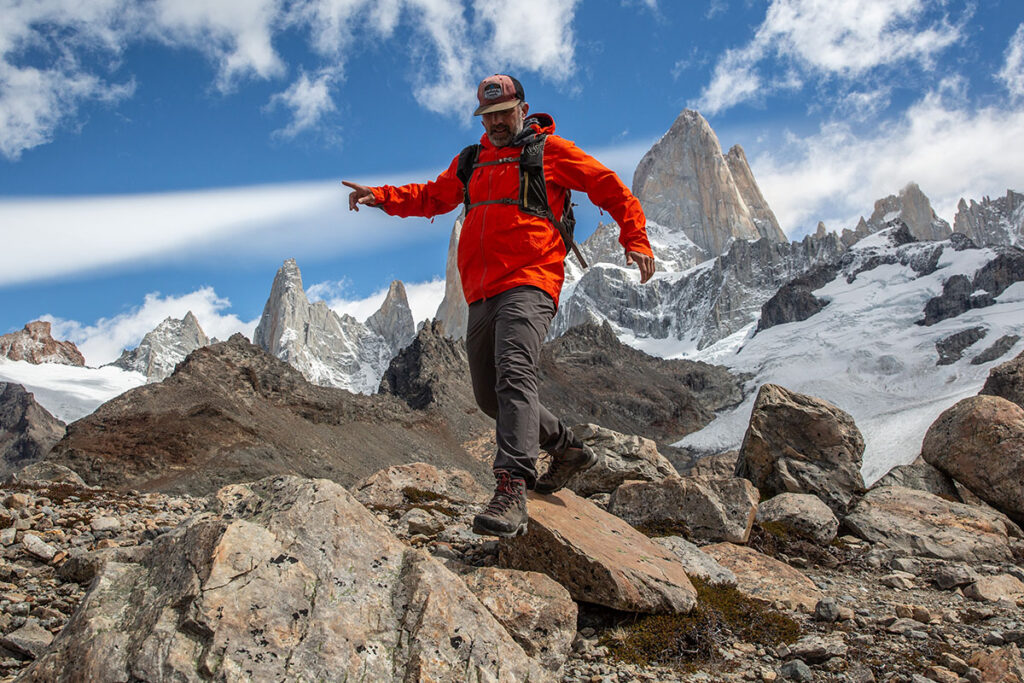
Approach Shoe Care
Approach shoes aren’t cheap, and there’s a lot you can do after purchasing them to ensure their longevity.
Keeps them clean
Shoes help you navigate challenging environments where dirt, sand or mud, and wet ground can accumulate. At the end of the day, if necessary, water the shoes and let them dry completely. Turn the shoes on their side and stuff them with newspaper to help them dry faster. Furthermore, during the day or at the end of the day, remove the insoles and shake the shoes well; All that sand and dirt can build up and wear out the material quickly if left unattended.
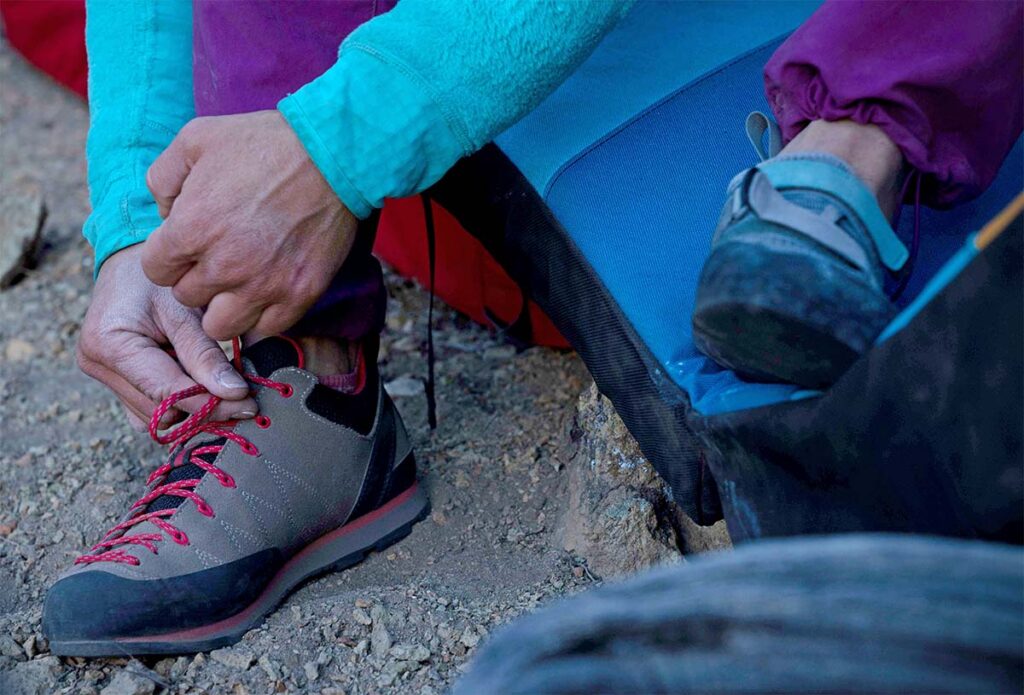
Air conditioning/sealing
If you have shoes with leather uppers, it is recommended to treat them with a leather softener/waterproofer. If left untreated, skin can absorb water, making it heavy and more susceptible to expansion and contraction. Nikwax and Gear Aid offer a full line of matching products.
Seam Gripping the Seams
Mountaineers often tape the seams of their shoes (above the seams and where the edge meets the skin) to reinforce them against abrasion caused by tears. This simple practice will significantly increase the lifespan of a pair of sneakers. You can do the same with approach shoes, especially if you plan to use them for rock climbing or technical climbing. Also, when climbing with assistance, expect the cleats of your shoes to come off very quickly if they are not reinforced. Gear Aid products such as Seam Grip or Freesole can be applied to these wear areas at the time of purchase and multiple times thereafter.
The Mid-Height Approach Shoe
Approach boots are designed specifically for mountaineers as an alternative to hiking shoes, but what about mid-height approach boots? Climbers may choose a medium-sized model for several reasons. You may need more ankle stability or protection, whether you’re carrying heavy loads on uneven terrain or keeping your ankle from bending. You may want a lightweight hiking shoe, but you want the sticky rubber of a hiking shoe. Maybe you plan to travel a lot in the snow and want more protection in addition to a durable pair of crampons. Or maybe you’re a great climber and need extra support when you’re on your feet all day with assistive devices.

Mid-height approach shoes can be used to go up a level, both in terms of weight and stability compared to traditional approach shoes, or to go down a level using hiking shoes. If hiking requires technical skill and weight isn’t a big issue (i.e. you don’t plan on wearing climbing shoes), mid-height boots are a great option. Approach shoes in this category include the La Sportiva TX4 Mid and the La Sportiva Aequilibrium Speed GTX (which are, of course, more mountaineering shoes than approach shoes).

